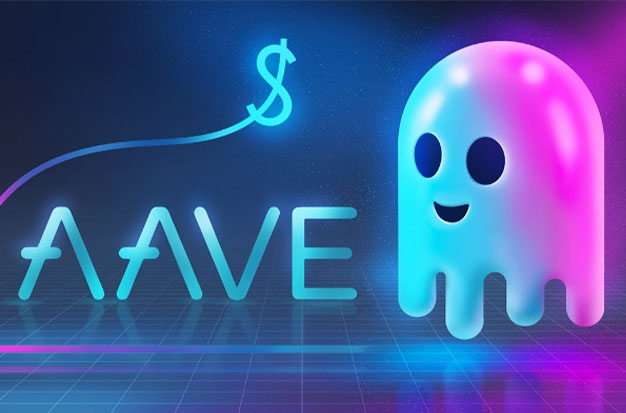Like other decentralized lending systems on Ethereum, Aave borrowers must post collateral before they can borrow. Further, they can only borrow up to the value of the collateral they post.
Borrowers receive funds in the form of a special token known as an aToken, which is pegged to the value of another asset. This token is then encoded so lenders receive interest on deposits.
What is Aave (AAVE)?
1. Who Controls Aave (AAVE)?
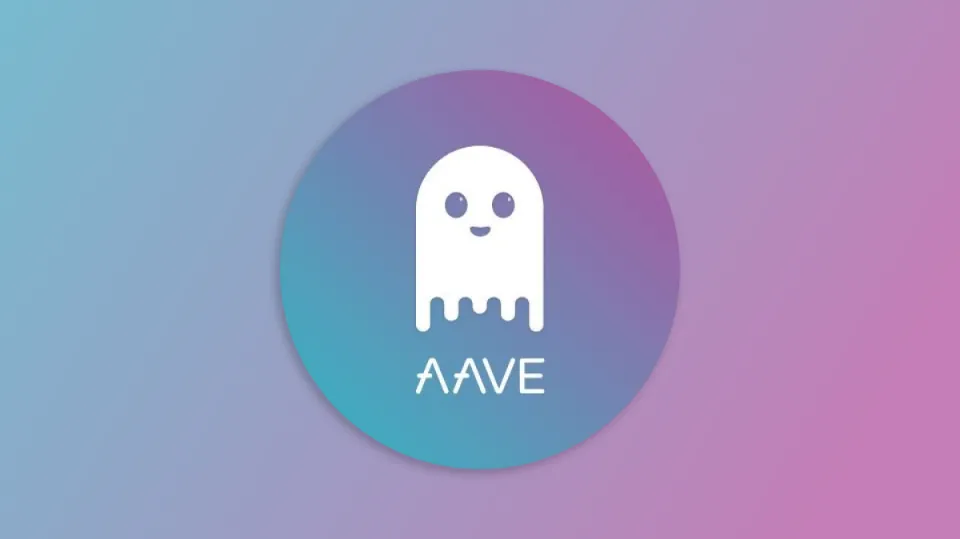
Aave is a decentralized finance (DeFi) protocol that lets people lend and borrow cryptocurrencies and real-world assets (RWAs) without having to go through a centralized intermediary. When they lend, they earn interest; when they borrow, they pay interest.
Aave was originally built atop the Ethereum network, with all the tokens on the network also using the Ethereum blockchain to process transactions; they are known as ERC20 tokens. Aave has since expanded to other chains, including Avalanche, Fantom, and Harmony.
The protocol itself uses a decentralized autonomous organization, or DAO. That means it’s operated and governed by the people who hold—and vote with—AAVE tokens.
2. Who Created Aave (AAVE)?
Aave’s origins stretch back to 2017. Stani Kulechov and a team of developers released ETHLend in an Initial Coin Offering (ICO) in November 2017. The idea was to enable users to lend and borrow cryptocurrencies with each other by allowing users to post loan requests and offers.
While ETHLend was a novel idea, the platform, along with its token LEND, lost traction heading into the 2018 bear market. Key pain points with the platform were a lack of liquidity and the difficulty in matching loan requests to offers.
So, through the 2018 and 2019 bear market, the ETHLend team overhauled its product, releasing Aave at the start of 2020.
In a podcast, Kulechov said that the bear market was one of the best things that could have happened to ETHLend. This is in reference to the opportunity he and his team was given to revamp the concept of decentralized cryptocurrency lending, creating what we now know as Aave.
3. Aave (AAVE) Pros and Cons
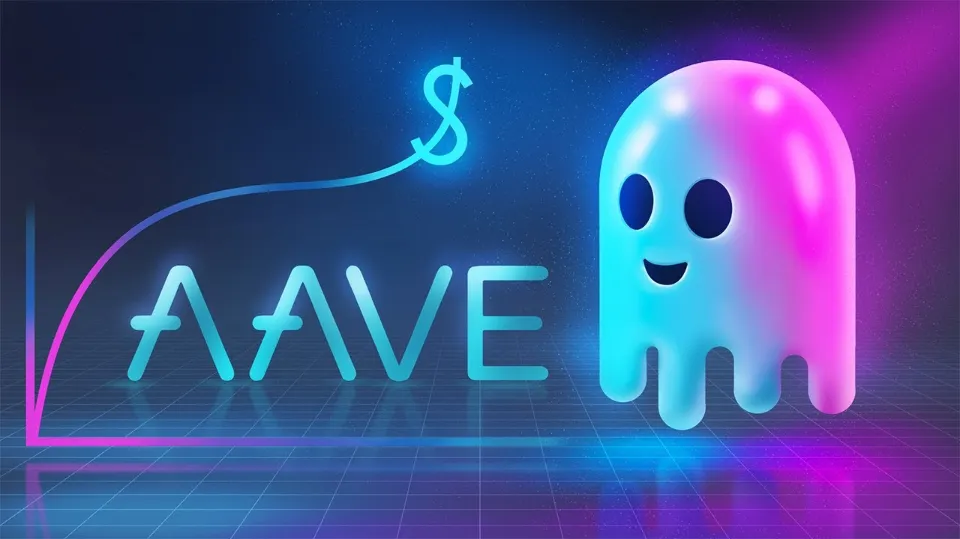
Aave (AAVE) Pros:
- AAVE has Demonstrated Resistance against Price Patterns of Bitcoin
- AAVE Brought Huge Returns to Investors
- Aave Has Increasing Total Value Locked
- Aave Is Forming More Partnerships
- Aave Has Support from Authentic Stakeholders
- AAVE is Finite in Supply
- Aave Has Embraced Layer-2 Scaling Technology with Polygon
Aave (AAVE) Cons:
- Strong Rivalry
- Aave Offers Low-Interest Rates
4. The Difference Between Aave (AAVE) and Traditional Currencies
The main difference between them is, the traditional currency is a centralized system and bitcoins are decentralized one and peer-peer systems. Hence there are no central authorities to regulate rules and regulations on a bitcoin transaction. But a traditional currency is strictly regulated by the governmental authorities. Both the bitcoins and fiat currency have values which can be used for buying and selling of goods in the market.
- Flexibility
With traditional currency functioning for five days a week and die to transaction restriction, there is a chance of freezing of currency. There is no limit in the number of currencies, being printed, and hence when there is inadequate currency, it will affect the buyers and sellers, resulting in inflation.
- No Fraudulent Activity
If you want to transact with a traditional currency system, the users have to provide personal details like name, address, phone number, and lots more. So, with the internet technology, the malicious user will be able to hack the account details of the traditional currency system easily. Traditional currency can suffer from double-spending, where the same money is used for more than one transaction.
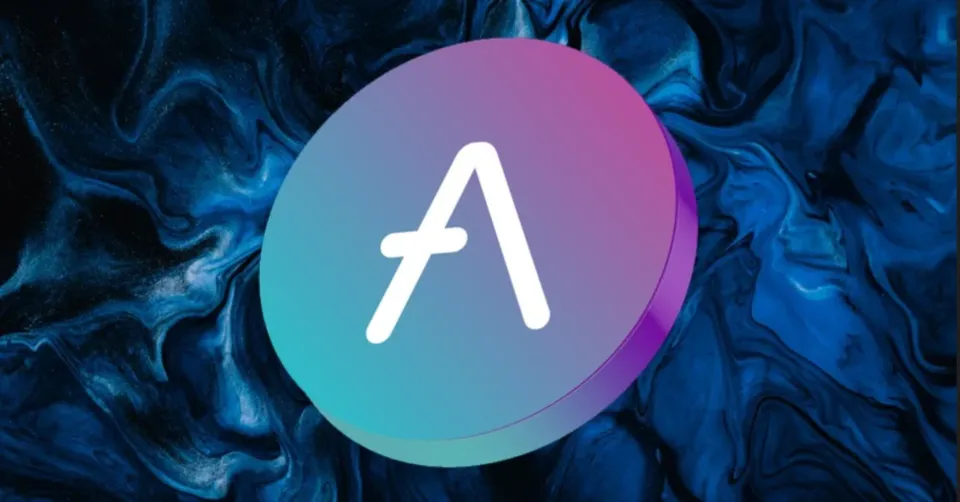
- Reduced Cost
In a traditional banking system, for making a national transaction, it will take 2-3 working days, and the transaction fees will be high. In the case of international transactions, the transaction fee will be very higher, and it will take 15 days to complete the transaction. In a Cryptocurrency system like bitcoins, there is no transaction fee for making a national transaction. The transaction will also take place in seconds or within 24 hours.
5. Is Aave (AAVE) Legal?
As one of the largest loan providers with a highly efficient and intuitive protocol, Aave appears legit and stands at the top of most recommendations lists.
An impeccable track record and gigantic user base add to Aave’s credibility. The constant monitoring of the protocol makes it a good and reliable protocol for trading crypto assets (thus, not a scam).
However, investing in cryptocurrencies and DeFi comes with the risk of loss due to consistently fluctuating markets. It is always recommended to gain extensive information on the subject before investing.
How Does Aave (AAVE) Work?
Aave is perhaps best described as a system of lending pools.
Participants deposit funds they wish to lend, which are then collected into a liquidity pool. Borrowers may then draw from those pools when they take out a loan. These tokens can be traded or transferred as a lender wishes.
To facilitate this activity, Aave issues two types of tokens: aTokens, issued to lenders so they can collect interest on deposits, and AAVE tokens, which are the native token of Aave.
The AAVE cryptocurrency offers holders several advantages. For instance, AAVE borrowers don’t get charged a fee if they take out loans denominated in the token. Also, borrowers who use AAVE as collateral get a discount on fees.
AAVE owners can further look at loans before they are released to the general public if they pay a fee in AAVE. Borrowers who post AAVE as collateral can also borrow slightly more.
How to Make Money with Aave (AAVE)?

Here are quite a few approaches for us to make money with Aave (AAVE), such as Mining, Buying & Hold Bitcoins, Accept Payments in Aave (AAVE), Earning Aave (AAVE) by turning into an Affiliate, Lending Aave (AAVE), and Micro Earnings, and Trading.
- Aave (AAVE) Mining
- Buy & Hold Aave (AAVE)
- Accept Payments in Aave (AAVE)
- Determine how you’ll use Aave (AAVE)
- Find a Aave (AAVE) wallet
- Find a Aave (AAVE) payment processor
- Accept Aave (AAVE) payments
- Becoming an Affiliate
- Lending Aave (AAVE)
- Micro Aave (AAVE) Earnings (Faucets, Offer Wall, Short Links, Surf Ads……)
- Aave (AAVE) Games
- Micro Aave (AAVE) Tasks
- Trade Aave (AAVE)
How to Buy Aave (AAVE)?
1. Things To Know Before You Buy Aave (AAVE)
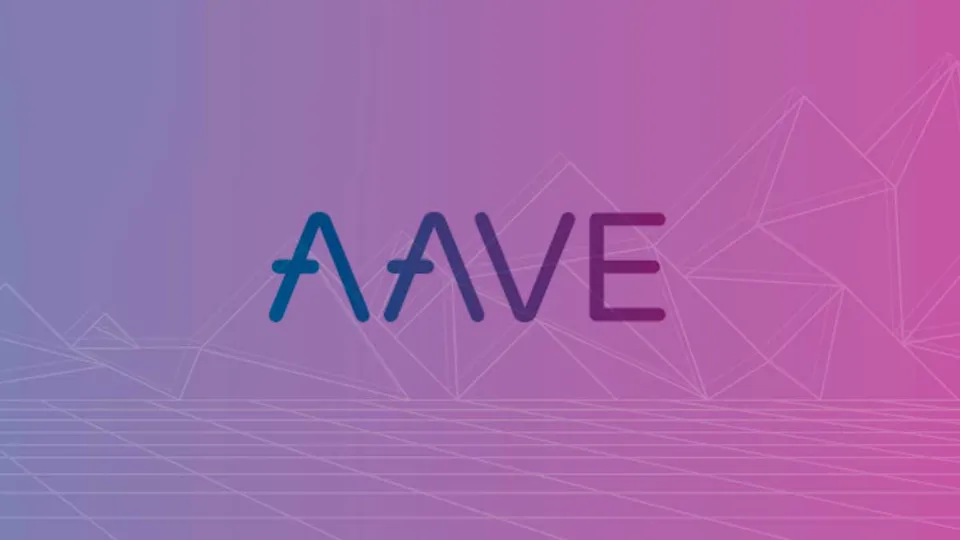
Buying Aave (AAVE) and holding onto it in hopes it will appreciate in value, is the most common form of “investing”. As with all investing, you should never invest more than you are willing/able to lose. This is especially true with Aave (AAVE), since it’s still a very risky investment.
The most important thing to keep in mind when buying Aave (AAVE) is to make sure to buy only from exchanges that have proven their reputation.
Another key tip is to make sure you don’t buy all of your Aave (AAVE)s in one trade. Instead use a dollar cost averaging method—buy a fixed amount every month, week or even day throughout the year. This ensures that you buy the most Aave (AAVE) when it’s on the rise, and less when it’s going down in price.
2. How to Buy Aave (AAVE) on a Crypto Exchange
- Coinbase – Secure online platform for buying, selling, transferring, and storing cryptocurrency.
- eToro – Trade and invest in a diversified portfolio, starting at $10, or practise risk-free with a virtual portfolio.
- Bitfinex – Digital asset trading platform offering state-of-the-art services for digital currency traders and global liquidity providers.
- Binance – Low trading fees, a generously wide range of leverage, and high liquidity.
- KuCoin – A large cryptocurrency exchange offering the ability to buy, sell, and trade cryptocurrencies
3. How to Buy Aave (AAVE) with Cash
- Find a seller in your area who accepts cash.
- Select amount of coins and place an order.
- Receive account number from the seller.
- Deposit cash into the seller’s account.
- Upload your receipt to prove you made the deposit/trade.
- Receive Aave (AAVE)!
4. How to Buy Aave (AAVE) with Credit Card
Not all platforms will allow you to use a credit card to make your Aave (AAVE) purchases. If you do choose a platform allowing such transactions, keep in mind that there may be extra fees associated with the purchase. Many credit card companies process cryptocurrency purchases via credit card as cash advances, which can incur high interest rates, among other fees.
5. How to Buy Aave (AAVE) with Paypal
- Login to Paypal and Select Cryptocurrency
- Select ‘Aave (AAVE)’
- Select ‘Buy’
- Choose How Much You Want to Buy
- Select Payment Method
- Hit the ‘Buy’ button
How to Sell Aave (AAVE)?

1. Things to Know Before You Sell Aave (AAVE)
To get started with Aave (AAVE), you’re going to need three things: an exchange, a wallet and the knowledge of how to buy the cryptocurrency. This last one is easy with our guide on how to buy Aave (AAVE), but the other two are still important. The exchange allows you to buy Aave (AAVE) from sellers, and the wallet gives you somewhere to store it long term.
When choosing an exchange, you should look for one with many users, good customer support and low fees. Three particularly popular exchanges with newcomers are Coinbase, Robinhood and Binance. However, there’s nothing really tying you to a specific exchange, so you can try new ones and quickly change at any time.
On the other hand, wallets can be much more complex. “Cold wallets” — physical devices holding cryptocurrencies offline — come with a steep up-front cost, but “hot wallets” — pieces of software that hold your coins on a computer — are often less secure. However, since hot wallets are fine for short-term storage and free to set up, it’s a good idea to start with them.
2. Sell Aave (AAVE) in Cryptocurrency Exchanges
- Step 1: Set up an exchange account
- Step 2: Transfer your Aave (AAVE) to your exchange wallet
- Step 3: Place a sell order
3. Sell Aave (AAVE) in P2P Trading
- Step 1: Go to the P2P Trading Page
- Step 2: Choose to Sell and Set Your Currencies
- Step 3: Find a Buyer
- Step 4: Choose How Much You Want to Sell
- Step 5: Send the Offer
- Step 6: Confirm the Release
4. Sell Aave (AAVE) in Aave (AAVE) ATMs
- Step 1: Choose withdraw cash
- Step 2: Choose Aave (AAVE) (these machines normally may support other cryptocurrencies)
- Step 3: Choose amount to withdraw
- Step 4: Send Aave (AAVE) to given address QR code
- Step 5: Receive cash immediately as Aave (AAVE) transaction is propagated on the network.
How to Get Free Aave (AAVE)?
Most genuine websites that allow you to earn free Aave (AAVE) require you to spend money on other things like buying cloud computer mining power, connecting your CPU for mining, playing a game, or completing micro-tasks.
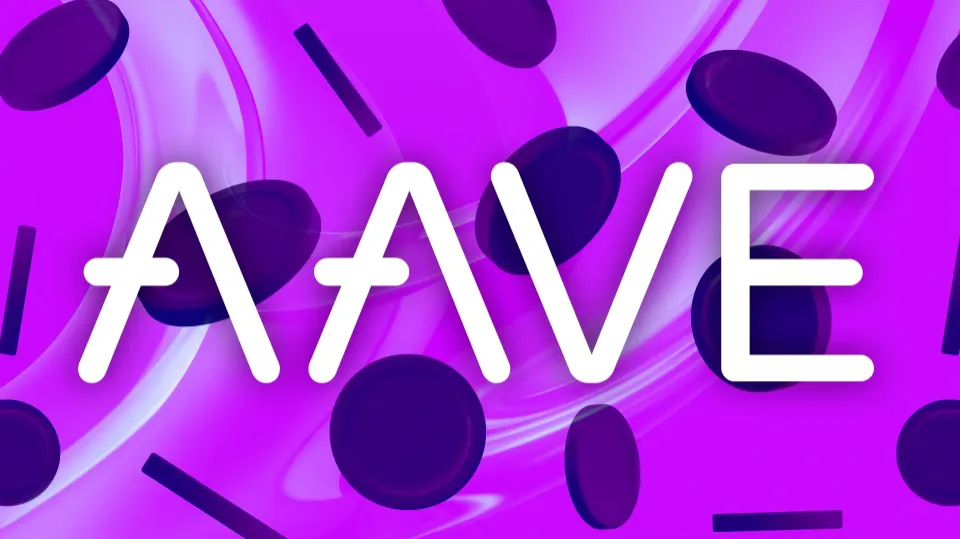
In other words, they offer free Aave (AAVE)s as an advertisement for their services. Otherwise, it takes time and effort to get free Aave (AAVE) given its current high value.
- Aave (AAVE) Faucet
- Aave (AAVE) PTC Sites
- Aave (AAVE) Airdrop
- Aave (AAVE) GameFi
- Aave (AAVE) Bounties
- Learning About Aave (AAVE)
- Shopping Reward
- Aave (AAVE) Interest
- Owning a Aave (AAVE) Faucet
- Write about Aave (AAVE)
- Aave (AAVE) Affiliate Program
- Free Aave (AAVE) Cloud Mining
Try These Best Bitcoin (BTC) Crypto Faucets on BtcAdv!
Autofaucet-Dutchycorp offers an Autofaucet. That means, you start it and it claims BTC automatically every few minutes.
Bitpaye is a crypto revenue and advertising platform. Members can earn free bitcoin by completing various tasks (including faucet, PTC, short link, etc.)
Cointiply is a popular bitcoin faucet. The Cointiply Bitcoin Faucet has paid users more than $3 million in cryptocurrency.
Fire Faucet allows you to automatically claim BTC at once in a single tab without any annoying ads or popups.
Freebitco bitcoin faucet is mainly famous for its faucet based operation mode, in which registered users solve and complete the verification code to generate Satoshi, and then convert it into bitcoin.
Dogemate is a free Bitcoin earning platform. It pays you to complete tasks such as PTC links, short links, rolling games, faucet, offer wall and referrals.
What is a Aave (AAVE) Wallet?
1. Aave (AAVE) Wallets for Beginners
Aave wallets come in all sorts of lovely shapes and sizes. So finding the best one for you should be a relatively easy task. Here are a few different types you can explore.
- Desktop AAVE wallet
As its name suggests, a desktop AAVE wallet is one that’s installed on a desktop computer or a laptop. Users get complete control over the wallet just as they would with a mobile wallet, just in a desktop environment. The main difference is that some desktop wallets have more advanced functionality like the ability to operate a complete node or full crypto exchange integration.
- Mobile AAVE wallet
More or less, a mobile AAVE wallet performs the same functions as a desktop wallet but on a mobile device such as a smartphone. Mobile AAVE wallets are often more convenient due to their portable nature and the ability to scan QR codes for quick crypto transactions in stores or between peers. There are AAVE wallets for all types of operating systems like Android or iOS.
- Web AAVE wallet
Web AAVE wallets are wallets that exist on a website or online service that allow users to send and receive cryptocurrency in addition to storing it. These wallets can be accessed anytime, and anywhere as long as there is the internet. Some of the most popular crypto services in the world are web wallets such as Coinbase, Kraken, Binance, and YouHodler. Security is a concern for web wallets but that can be managed with due diligence to make sure the web wallet you choose has a good history of high-level security and insurance. It’s also wise to use web wallets in tandem with the more secure hardware wallets.
2. How To Make A Aave (AAVE) Paper Wallet?
Although there are ways to manually generate a private key, the vast majority of paper wallet creators use a private key generator. Once a private and public key have been created, you are able to print a paper wallet, which because it’s not online doubles as a cold storage wallet. This will include the public and private key you’ve generated, usually as both a string of characters and QR codes.
Anyone with a paper wallet’s public key can send crypto to it as often as they like. Using the corresponding private key, you can move the crypto balance of the paper wallet into a software wallet. This transfers the funds to a new private key on your software wallet.
3. Ways To Set Up a Aave (AAVE) Wallet
There are many Aave (AAVE) wallets out there, and all of them differ in their characteristics. Mobile software wallets are great for day-to-day use, while desktop software wallets bring about a great balance between convenience and security. Lightweight web wallets are the best choice for quick online transactions. Cold encrypted hardware wallets like Ledger or Trezor are the best for long-term storage of bitcoin. However, unlike other options, hardware wallets aren’t free and cost $50 or more.
Set up a Aave (AAVE) Software Wallet
- Mycellium
- Bread (BRD) wallet
- Bitcoin wallet
- Electrum
- Samourai
Set up a Aave (AAVE) Web Wallet
- Coinbase
- Blockchain.info
- BTC.com
- Rahakott
- BitGo
Set up a Aave (AAVE) Hardware Wallet
- Ledger
- Trezor
- BitLox
- KeepKey
How to Buy and Sell Aave (AAVE) In Different Area?
1. How to Buy and Sell Aave (AAVE) in India?
You can get Aave (AAVE) in India mainly through buying and mining. To buy it, you can use several online exchanges such as WazirX, Coinbase, BuyUcoin, and CoinDCX. Choosing the best online exchange is another task, but here are a few things you should keep in mind while buying the cryptocurrency in India.
- It’s best to go with an exchange that allows you to withdraw cryptocurrency in INR to your personal online wallet for safekeeping
- Make sure that the internet connection is secure. Also, don’t forget to use safe internet practices like two-factor authentication and unique and strong passwords.
- KYC aka Know Your Customer verification is a must, at least in India. For that, you can use a PAN card and valid address proof
- Now, add the bank account that is linked to your PAN card. Verification will take around 2-3 days
After the verification is complete, you can start trading Aave (AAVE) in India. Money from your bank accounts can be transferred using NEFT, RTGS, and debit and credit cards. Currently, the value of one Bitcoin is around 27 lakh; however, you don’t have to buy a whole coin to begin investing. You can buy Bitcoin in parts, i.e. small investments for as low as Rs 500. That way, you will own a small percentage of the cryptocurrency.
2. How to Buy and Sell Aave (AAVE) in Canada?
- Sign up and get KYC (Know-Your-Customer) verified on a Canadian crypto exchange like Bitbuy.
- Deposit CAD to the exchange directly from your bank account.
- Buy Aave (AAVE).
- Store Aave (AAVE) on your exchange account or transfer it to a wallet.
3. How To Buy and Sell Aave (AAVE) In The UK?
- Create a Coinbase account.
- Complete identity verification to access fiat payment options.
- Navigate to the Accounts and select the GBP wallet.
- Fund your account using Bank Transfer or other methods.
- Once the deposit is complete, go to the Buy/Sell page and select GBP to Aave (AAVE).
4. How To Buy Aave (AAVE) in the United States?
The best way to buy and sell Aave (AAVE) in the USA is through an exchange such as Coinbase, Kraken, Gemini, Coinmama, Binance, or Changelly. There is a plethora of options available, so it is best to look at each of the exchanges’ processes for deposits and withdrawals, fees, and transaction speeds to determine which is best for you.
Aave (AAVE) History
On December 18, 1996, the Oakland Unified School District passed a resolution for public schools to use AAVE as a tool in teaching standard English and to provide resources to help educators understand AAVE. This sparked national outrage. The backlash levied at the resolution mirrors incorrect and racist ideas about AAVE still maintained two decades later: that AAVE is “lazy,” “broken,” and “worse” than standard English. The reality is that AAVE is just as sophisticated as standard English and deploys many distinctions and nuances standard English lacks. Despite this, misconceptions about AAVE abound and have major consequences for AAVE speakers who have to face racially-motivated attacks and implicit bias for using it.
This article aims to present an introduction to the history of AAVE, some of its basic grammatical distinctions from standard English, and the impact of misconceptions about AAVE. This is hardly exhaustive and AAVE isn’t a monolith; different regions have their own nuances and this article only covers some basic traits found in most varieties of AAVE. Additionally, neither of the authors are fluent in AAVE, and as such we’ve attached citations to make sure our commentary is accurate and to provide more detailed readings for those interested in AAVE linguistics.
The exact origins of AAVE are still hotly debated by linguists, who fall into two camps. The first camp supports the dialect hypothesis, which proposes that the earliest forms of AAVE emerged from African slaves coming in contact with indentured servants and learning their dialect in order to communicate with the servants and each other. Over time, this dialect evolved into AAVE.
However, the Creole hypothesis proposes that AAVE began by mixing various West African languages with English to create a new means to communicate, and that over time this creole converged with standard English. Creolization is a common process that results from lots of people who speak different languages needing a common means to communicate and mixing their languages together to make one. Most regions with large slave plantations developed creoles since West Africa has hundreds of unique languages and cultures which European slave owners forced onto shared plantations. The term creole itself is drawn from Haitian Creole, which emerged as a direct result of the slave trade.
Regardless of which hypothesis you find more convincing, we know this older form of AAVE emerged in the South since slavery concentrated most African Americans on southern plantations. As a result, AAVE includes many features of southern pronunciation and grammar, like the word ain’t.
AAVE spread across the country with the movement of Black people. The largest movement, deemed the Great Migration, took place in the early 20th century when millions of Black folk moved to all corners of the country, fleeing Jim Crow and the KKK in search of opportunities for a better life.
As AAVE spread across the United States each region developed distinct differences just like standard English dialects: AAVE in Baltimore differs from its counterparts in Los Angeles or New York, and the largest distinctions are perhaps between rural and urban varieties of AAVE.
This spread has also influenced standard English. Many phrases, like “to have a beef with” or “give props” are commonly used in standard English without speakers realizing their origin in AAVE. The internet has only accelerated this process. Slang spreads quickly across social media or through music and memes. Modern slang like “bae,” “squad,” or “yas queen” aren’t often attributed to AAVE and many speech patterns that are commonplace among younger generations are borrowed directly from AAVE, like plopping as* after an adjective for emphasis.

